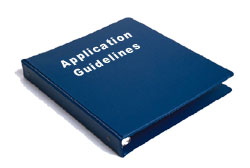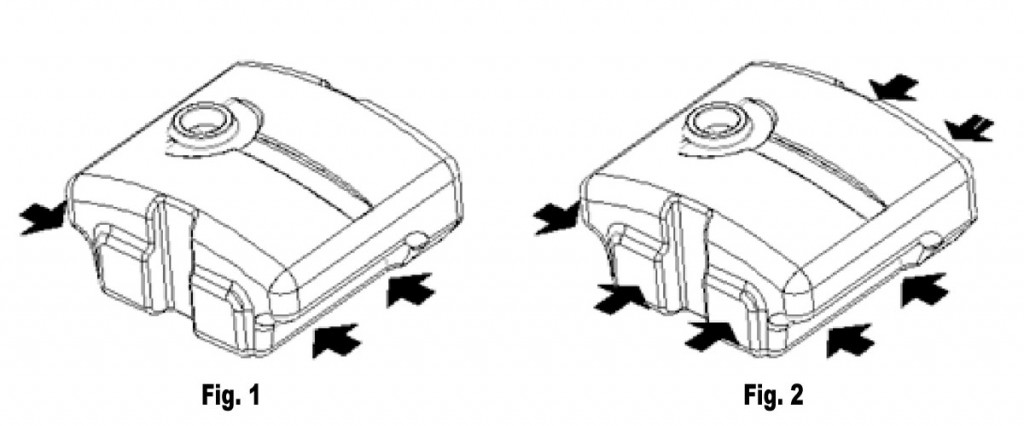
Ace polyethylene tanks are designed to provide a safe and durable means for the containment of approved chemicals providing that the tanks are handled, installed, used and maintained according to the following guidelines. Consult Den Hartog Industries concerning any questions regarding these guidelines. Improper handling and installation can cause physical damage to tanks, fittings and accessories resulting in leakage and/or tank wall failure. Be certain to pay attention to all “Caution”, “Warning” or “Important” labeling applied to the product(s) as well as any limitations specified on the product prints. Improper use and maintenance can result in reduced product life and leakage and/or tank wall failure. Failure to comply with the following product guidelines will void all factory warranty.
1. Damaged Product Claims:
Upon delivery, inspect the tank immediately for defects or shipping damage. Any damage or discrepancies must be noted on both the driver’s bill of lading and your packing list. Claims must be made within 30 days. See page 16 regarding the return policy for damaged or defective products.
2. WARNING – Unloading Tanks:
When unloading the tank, avoid contact with sharp objects such as lift forks or loader buckets that can cause damage, including tank wall puncture, if the proper precautions are not observed. Never allow tanks to be rolled over on the fittings. Large bulk storage tanks should be carefully unloaded with the use of a crane or another suitable lifting device. Insure that the unloading area is flat and free of large rocks, sharp objects or other objects that could damage the tank. Avoid unloading the tanks in high winds. Always support or brace tanks that are placed on their side to prevent rolling.
3. WARNING – Tank Installation:
When selecting the tank site, insure that the site is level and that adequate drainage is provided for water runoff. The bottom of all tanks must be completely supported. Reinforced concrete support pads are recommended for tanks with capacities over 1000 gallons (3785 liters). In all cases be certain that the base material is designed to support the bearing capacity requirements of the tank, including seismic and wind loads. If the tank is installed in a stand or skid, note that the bearing capacity requirements of the concrete or soil will be increased. Always anchor the tank according to seismic or wind load zone requirements for the site. Always consult with the applicable building codes governing the tank site for specific support and anchoring requirements.
4. WARNING – Tank Burial:
The only Ace Roto-Mold tanks designed for burial are the septic and cistern tanks. Other tanks are not designed to handle the pressure of surrounding earth and should not be buried.
5. WARNING – Chemical Resistance:
Be certain that the tank, fittings, and fitting gasket materials are compatible with the chemicals to be contained and the anticipated storage temperatures. Refer to the Chemical Resistance Data Chart for the most commonly stored chemicals. Used motor oil is not recommended for storage in Ace Roto-Mold tanks due to contaminants. For applications not listed, consult the chemical supplier for storage recommendations in polyethylene tanks, or consult Den Hartog Industries.
6. WARNING – Transportable Tanks:
Tanks that will be transported will require special consideration with regard to the dynamic loads introduced by starting, turning or stopping the tank and vehicle. Insure that the vehicle is designed for supporting and braking the size tank selected, including the tank weight, capacity and the specific gravity of the chemical to be transported.
Horizontal cylindrical tanks, which are not free standing, must be fully supported around the bottom of the tank diameter by not less than 1/3 of the circumference. Freestanding tanks (tanks equipped with support legs) must be fully supported under the legs and open sump areas and be installed with hoops, which are securely anchored to a metal support skid. In all cases, the tank skid or stand must be adequately fastened to the vehicle bed to prevent shifting. Vertical bulk storage are designed for stationary applications.
7. WARNING – Fitting Installation:
Be careful not to over tighten poly fittings. If over tightened, these fittings can be damaged and leak. In such cases, always replace the fittings. If thread sealant is used, be certain that it is rated for use with the fittings and chemical to be contained. Never subject fittings to loads or weight that may cause cracking. Avoid rigid plumbing from tank fitting. Fitting installations to and from tank must consider the effects of expansion and contraction stresses due to temperature as well as filling and emptying of the tank.
Caution: Be particularly careful with fittings that are friction welded, often referred to as “spin welds”. These fittings can fail if attachments are not properly supported, are exposed to excessive vibration or are over tightened. Never hang long lengths of hose or pipe without support hangers to carry the dead weight of the hose or pipe. Filters, valves and couplings will need to be supported so the loads are not transferred to the “spin weld” fitting.
Dry Fittings – Fittings that are not exposed to chemicals and have no low temperature limit providing the plumbing loads that the fittings are subjected to are within the Application Guidelines recommendations.
Wet Fittings – Fittings that are exposed to chemicals will have a low temperature rating equivalent to the freezing limits of the chemical the fitting is exposed to. In the case of water that would be 32° F (0° C) ambient. Chemicals or solutions such as calcium chloride are generally rated for -20° F (-29° C) depending upon the salt concentration. Note that heaters, heat bands or chemical inhibitors that prevent chemical freeze up will allow the fittings to be exposed to ambient temperatures below the published freeze point of the chemical. Again, the low temperature rating of all fittings must be above the point at which the chemicals freeze or solidify.
8. WARNING – Testing Prior to Installation:
Never fill a newly installed tank with chemical without first testing the tank, fittings and installation with a non-hazardous chemical such as water. This procedure will also serve to rinse out the tank and connections. Test the installation at full capacity for a minimum of 4 hours. Note that tank warranty does not cover any fluid losses.
9. WARNING – Proper Venting:
All tanks must be vented for atmospheric pressure as well as pressure created by filling and emptying the tank. Never attempt to fill or empty a tank without adequate venting. Keep vent clear of any ice or snow that may restrict ventilation. Tanks that are 142″ in diameter require additional venting beyond what is provided by a vented lid.
10. CAUTION – Securing Rectangular Tanks:
The flat sides of rectangular or square tanks greater than 18″ wide or high must be securely supported according to the specific gravity of the chemical stored and application temperature. Support all tanks that are to be transported.
12. CAUTION – PU0205-52 and PU0305-60 Pickup Tank Support Recommendations:
It is recommended that in all applications the tanks have sidewall support as illustrated in Fig. 1. In applications where the chemical to be contained has a specific gravity rating above 1.0 (greater than water) it is recommended that the sides be supported as illustrated in Fig. 2. Failure to properly support the tanks as recommended will cause excessive deflection and the possibility of failure and void all warranty.

13. WARNING – Equipment Installation:
Never install heavy equipment on the tank walls. Consult the equipment manufacturer for recommendations regarding installation on polyethylene tanks of the size selected.
14. WARNING – Submerged Heater Installation:
Submerged heaters must be installed with a minimum of a 4″ clearance from the tank walls. Never allow the heater to contact the walls of the tank. Consult the heater manufacturer for recommendations regarding installation of the heater in polyethylene tanks.
15. WARNING – Protect Tank Walls from Impact:
Insure that the tank walls are protected from impacts, especially at temperatures below 40° F (4° C).
16. WARNING – Never walk on tank:
Do not walk on the tank surfaces. Surfaces may be slippery. Serious injury or death could occur. Always follow OSHA regulations when working on or around tank systems.
17. WARNING – Never enter tank:
Never enter a tank without first taking the proper safety precautions. Serious injury or death could occur. Consult with the chemical supplier regarding recommendations as well as the appropriate safety equipment required for handling the chemicals to be stored. Always follow OSHA regulations when working on or around tank systems.
18. WARNING – Do not use portable ladders:
Never use portable ladders to access any area of the tank. Rolling Safety Ladders may be used providing they are OSHA compliant and rated for the height to be reached.
16. WARNING – Secondary Containment Requirements:
Consult the appropriate governing agency regarding secondary containment requirements for the tank selected and the chemicals to be stored.